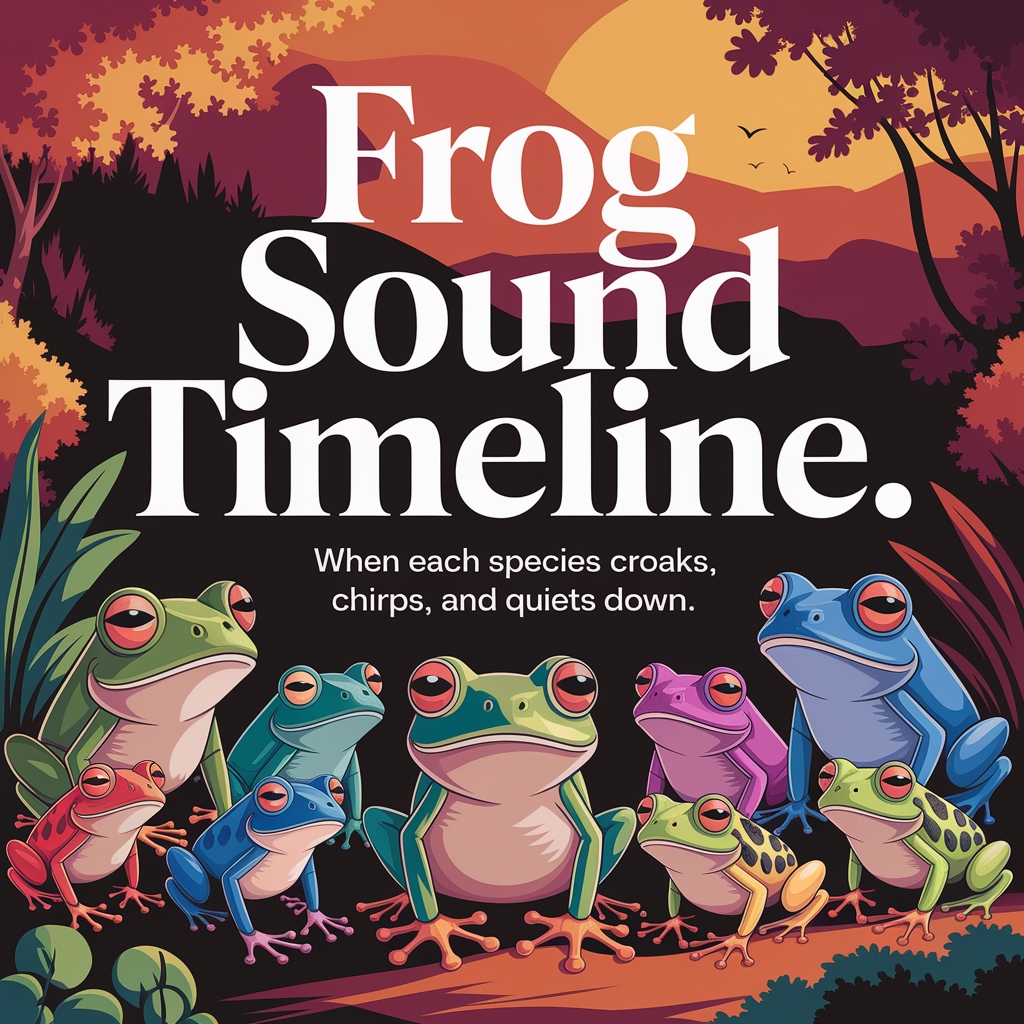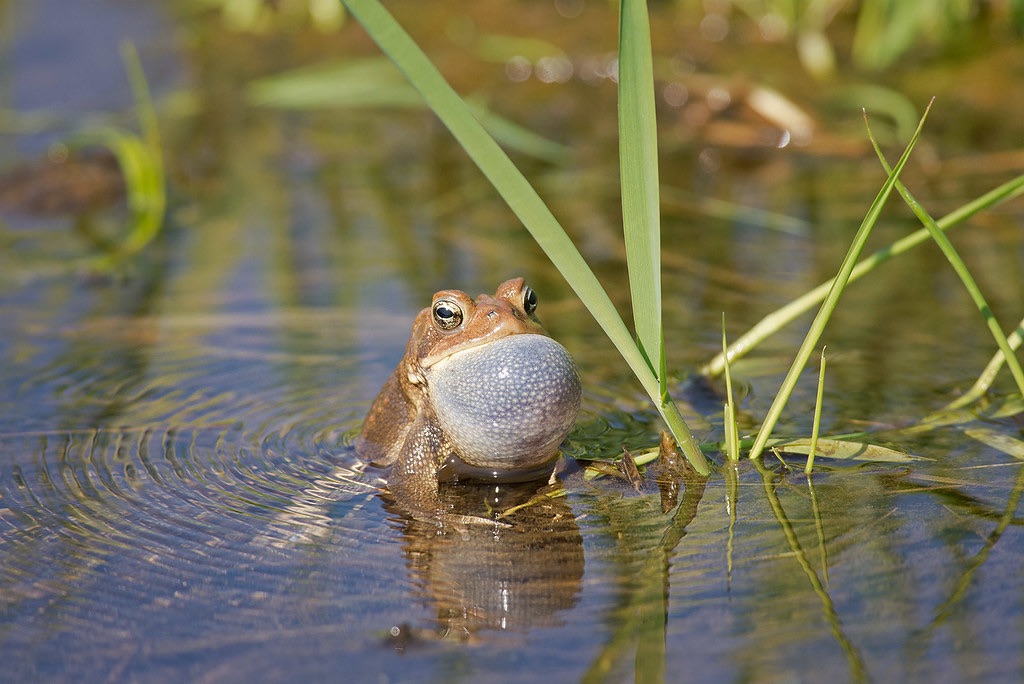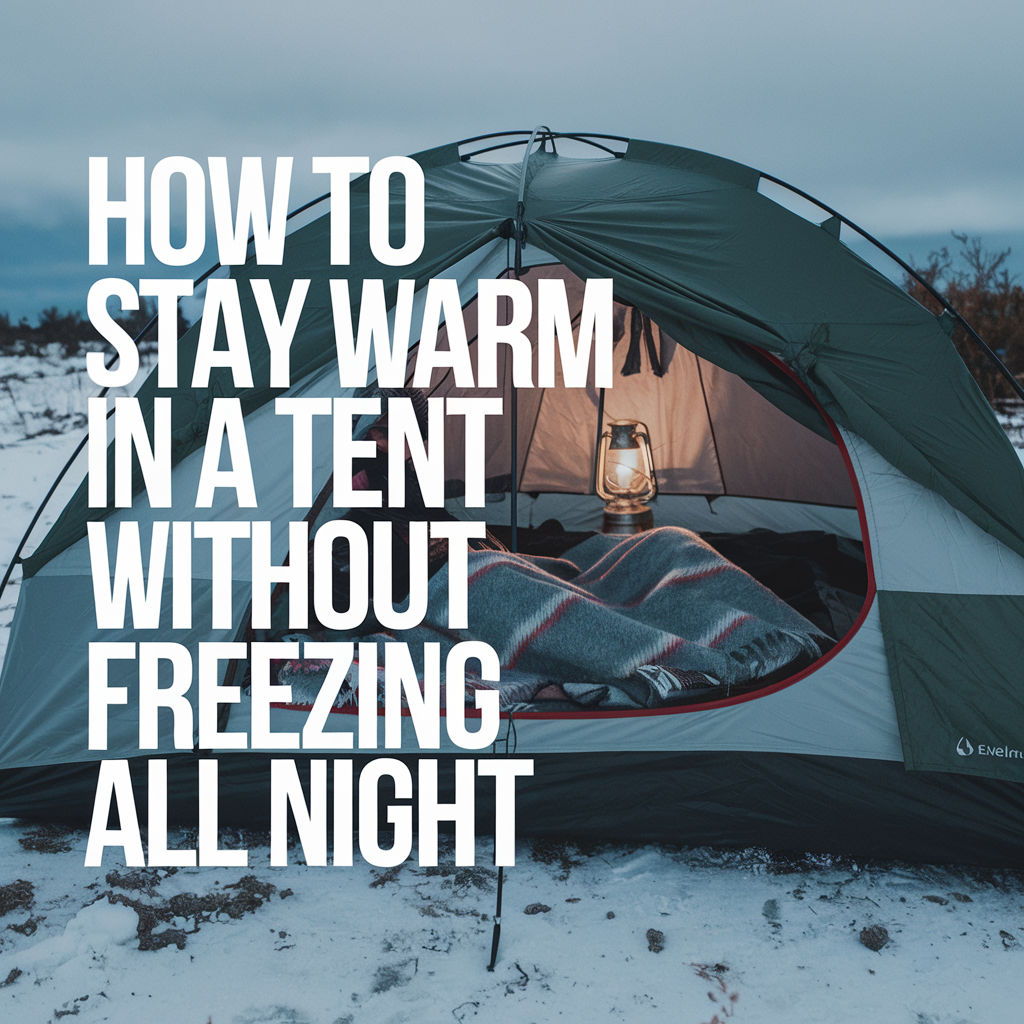
Why Frog Calls Matter for Survivalists
If you’ve ever spent time deep in the wilderness, you know that nature has its own way of communicating. Frog calls aren’t just background noise—they can be powerful survival tools. These amphibians tell us a lot about the environment, from the presence of water to seasonal changes and even upcoming weather shifts.
When you’re out camping, hiking, or in a real survival situation, knowing how to identify frog sounds can help you locate water sources, predict storms, and understand the ecosystem around you. Just like learning how to safeguard your home in emergencies is essential for survival, understanding frog calls can be a game-changer in the wild.
Frogs are also indicators of environmental health. If you hear a variety of frog species calling, it usually means the water is clean and the habitat is thriving. But if the area is silent, it could be a warning sign of pollution or poor conditions.
The Frogs You’ll Hear in the Wild
When you’re out in the woods or near wetlands, certain frog species will make themselves known, especially at night. Knowing what each one sounds like can help you pinpoint their locations and even determine what kind of water source is nearby.
Common Frog Calls & What They Mean
- Spring Peepers – These tiny frogs make a high-pitched peeping sound, often in early spring. If you hear them, warmer weather is on the way.
- Boreal Chorus Frog – Their call is a short, musical trill, like running a fingernail over a comb. They thrive in marshy areas.
- Wood Frog – Their sound is more of a quacking noise, similar to a duck. Wood frogs are found in forests and near seasonal pools.
- Northern Leopard Frog – A snoring or grunting sound is a dead giveaway for this species. They prefer permanent bodies of water like ponds and slow-moving streams.
- American Toad – Their long, high-pitched trill lasts for several seconds. They often hang out in wooded areas and gardens.
- Gray Tree Frog – If you hear a bird-like trill, it’s probably a gray tree frog. They’re excellent climbers and tend to stay higher up in trees near water.
- Green Frog – These frogs sound like a plucked banjo string and are common in lakes, rivers, and marshes.
- American Bullfrog – A deep, resonant bellow that sounds like “jug-o-rum.” These big frogs are found in larger, more permanent water sources.
Just like identifying edible weeds can help you forage in the wild, recognizing these frog calls can guide you to water and give you valuable survival insights.

How to Identify Frogs by Their Calls
If you’ve ever been out in the wild at night, you know how loud the chorus of frog calls can get. But with a little practice, you can train your ears to distinguish between different species. Identifying frogs by sound is a skill that takes time, but once you get the hang of it, it’s like having a built-in survival tool that tells you what’s happening in the environment around you.
Breaking Down a Frog’s Call
Each frog species has a unique pitch, rhythm, and duration to its call. Here’s what to listen for:
- Pitch – Some frogs, like the spring peeper, have high-pitched calls, while others, like the bullfrog, have deep, low bellows.
- Rhythm – Some frogs repeat their calls rapidly, like the boreal chorus frog, while others, like the wood frog, have more spaced-out calls.
- Duration – American toads hold a long trill for several seconds, while green frogs make short, plucked sounds.
You don’t need high-tech gear to identify frogs—just spend time listening and comparing sounds. If you want to take it a step further, you can record frog calls on your phone and compare them to online databases or your own reference recordings. This is similar to the importance of tracking survival foods—it’s all about knowing what’s around you and how to use it to your advantage.

Using Frog Calls to Find Water Sources
One of the most valuable survival uses of frog calls is finding water. Frogs rely on wetlands, ponds, and streams to survive, so where you hear them, you’ll likely find a reliable water source nearby.
How to Use Frog Calls to Locate Water
- Follow the sound – Walk toward the loudest concentration of frog calls, which will often lead you to a water source.
- Listen for different species – If you hear a mix of tree frogs and ground-dwelling frogs, you may be near both standing and running water.
- Pay attention to seasonal calls – Early spring calls from species like wood frogs suggest temporary rain pools, while summer calls from bullfrogs indicate larger, more permanent water bodies.
Being able to navigate using nature’s cues is a key survival skill, much like knowing how to safely store food in bear country to avoid unwanted visitors. Learning how to track water sources using frog sounds is a smart way to ensure you never run dry in a wilderness survival situation.

Frog Calls and Weather Predictions
Believe it or not, frogs can give you clues about upcoming weather changes. Many survivalists and outdoorsmen swear by the idea that frogs call louder or more frequently before rain. While not a perfect science, there’s actually some truth behind this.
How Frogs Predict Weather
- Increased humidity = More active calls – Frogs thrive in moist environments, so as humidity rises before a storm, they tend to call more frequently.
- Sudden silence – If frogs that were previously loud go completely quiet, it could signal an incoming cold front or drastic weather shift.
- Longer, more intense calls – Some species, like bullfrogs, are known to call more before rain arrives. Their calls may last longer or seem louder than usual.
Just like staying prepared for winter storms is essential for home survival, understanding nature’s weather signals can help you prepare while camping or in the wilderness.

Recording and Recognizing Frog Calls in the Field
If you’re serious about learning frog calls, recording them can be a game-changer. With a simple smartphone or field recorder, you can build your own reference library to help with species identification and environmental tracking.
How to Record Frog Calls for Identification
- Go out at night – Most frogs call during the evening or early morning hours.
- Find a quiet location – Too much background noise will make it harder to distinguish calls.
- Use a voice recorder app – Many free apps work well for capturing frog sounds.
- Compare recordings – Use online databases or reference guides to match the calls you’ve recorded.
Tracking frog calls is like documenting survival food sources—the more you observe and record, the more you’ll understand your surroundings. It’s a great skill for survivalists, nature lovers, and anyone who wants to get in tune with the wild.

Why Learning Frog Calls Can Make You a Better Outdoorsman
Mastering the ability to identify frog calls isn’t just a cool party trick—it’s a legit survival skill. Whether you’re using their sounds to locate water, predict weather changes, or just gain a deeper understanding of the environment, knowing how to interpret nature’s soundscape makes you a more aware and capable outdoorsman.
The Benefits of Recognizing Frog Calls
- Find water sources quickly in survival situations
- Gain insight into seasonal and weather changes
- Enhance your ability to navigate and track wildlife
- Develop a greater appreciation for nature’s natural patterns
Just like learning how to start a fire in survival situations or identifying edible plants, understanding frog calls adds another valuable tool to your outdoor skillset.
If you’re serious about improving your wilderness awareness, start by getting outside, listening, and recording frog calls. It won’t take long before you can recognize them instantly, making you a better, more prepared outdoorsman.

As an Amazon Associate we earn from qualifying purchases through some links in our articles.



